konomad editions No°003
↑
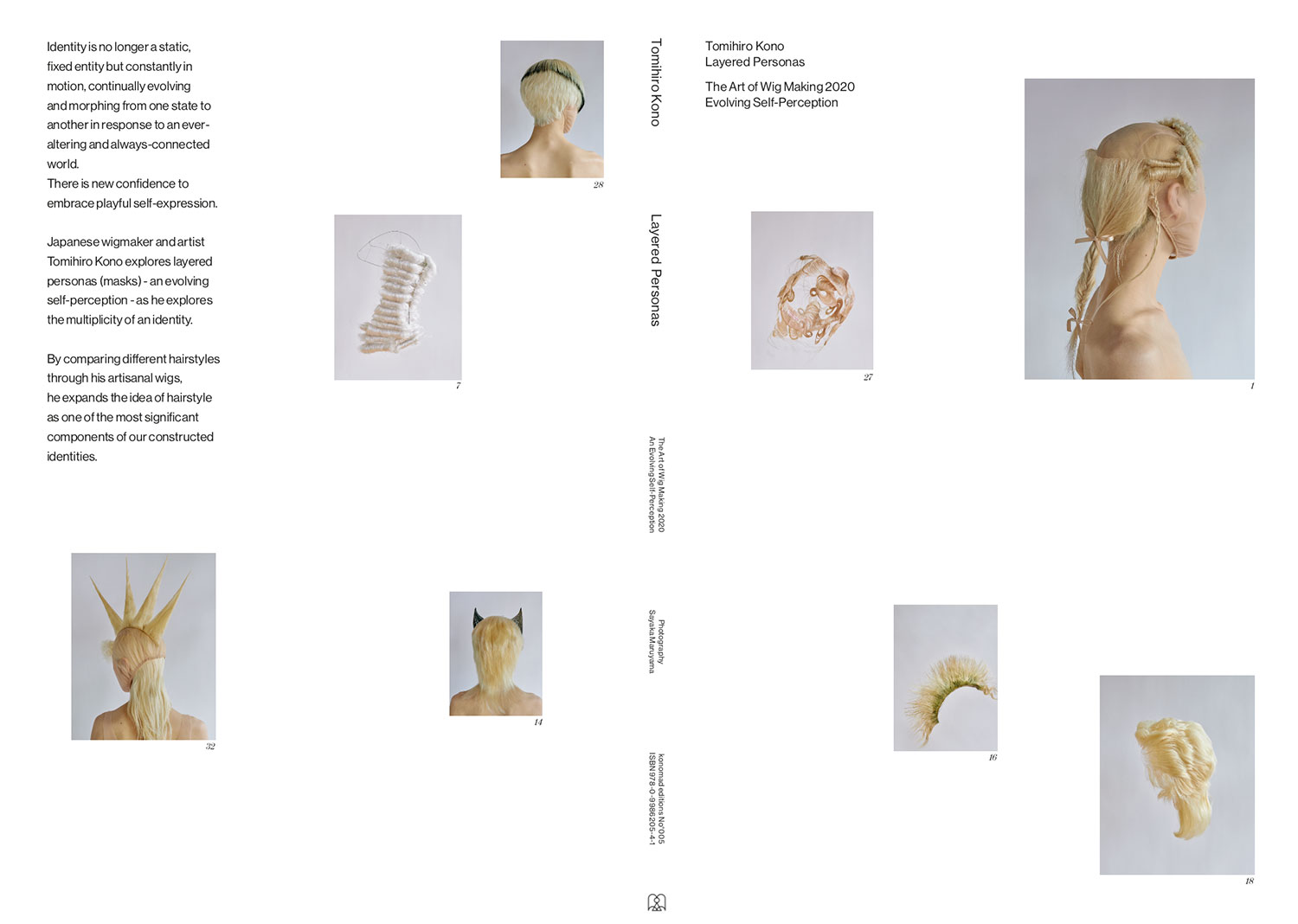
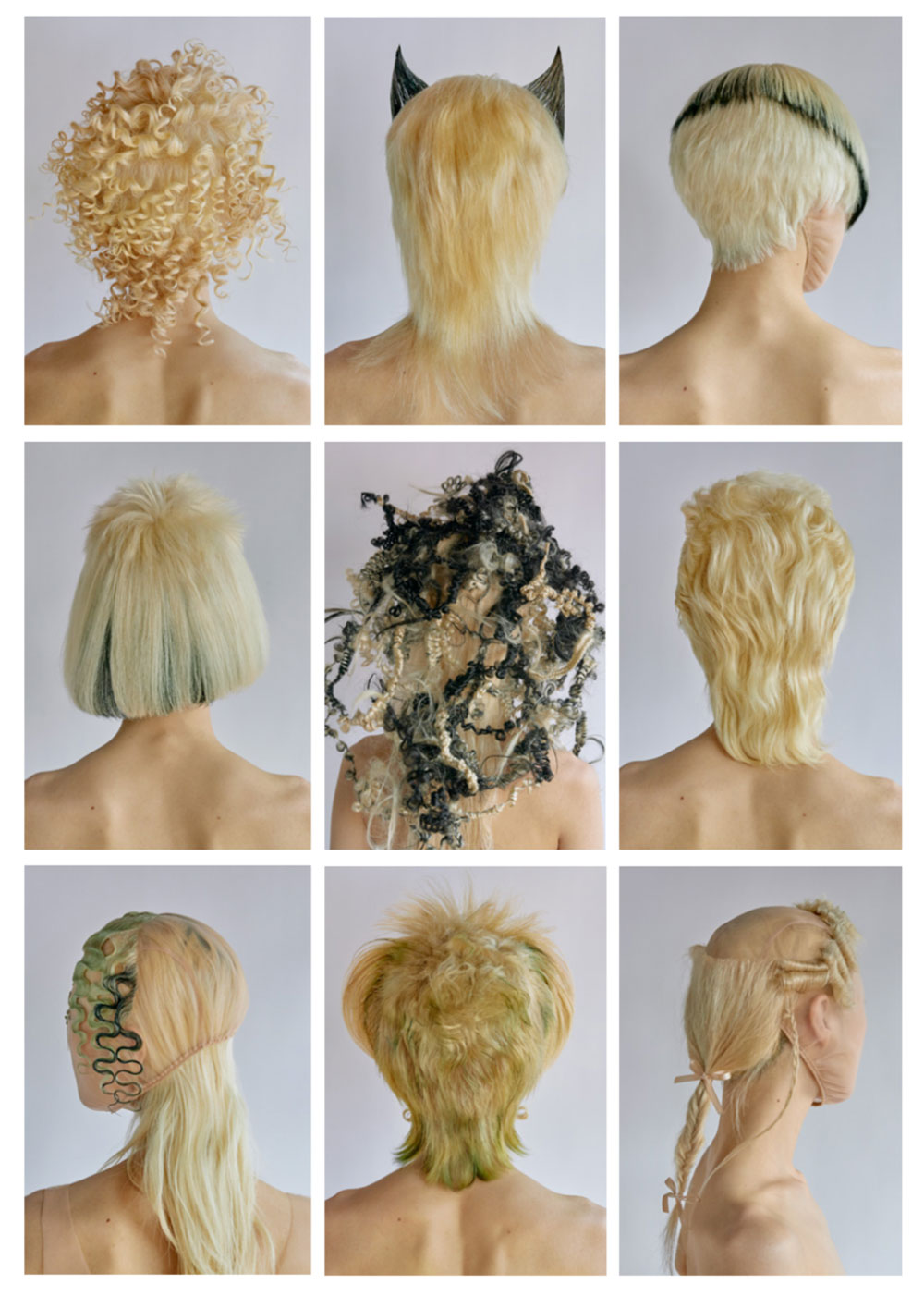
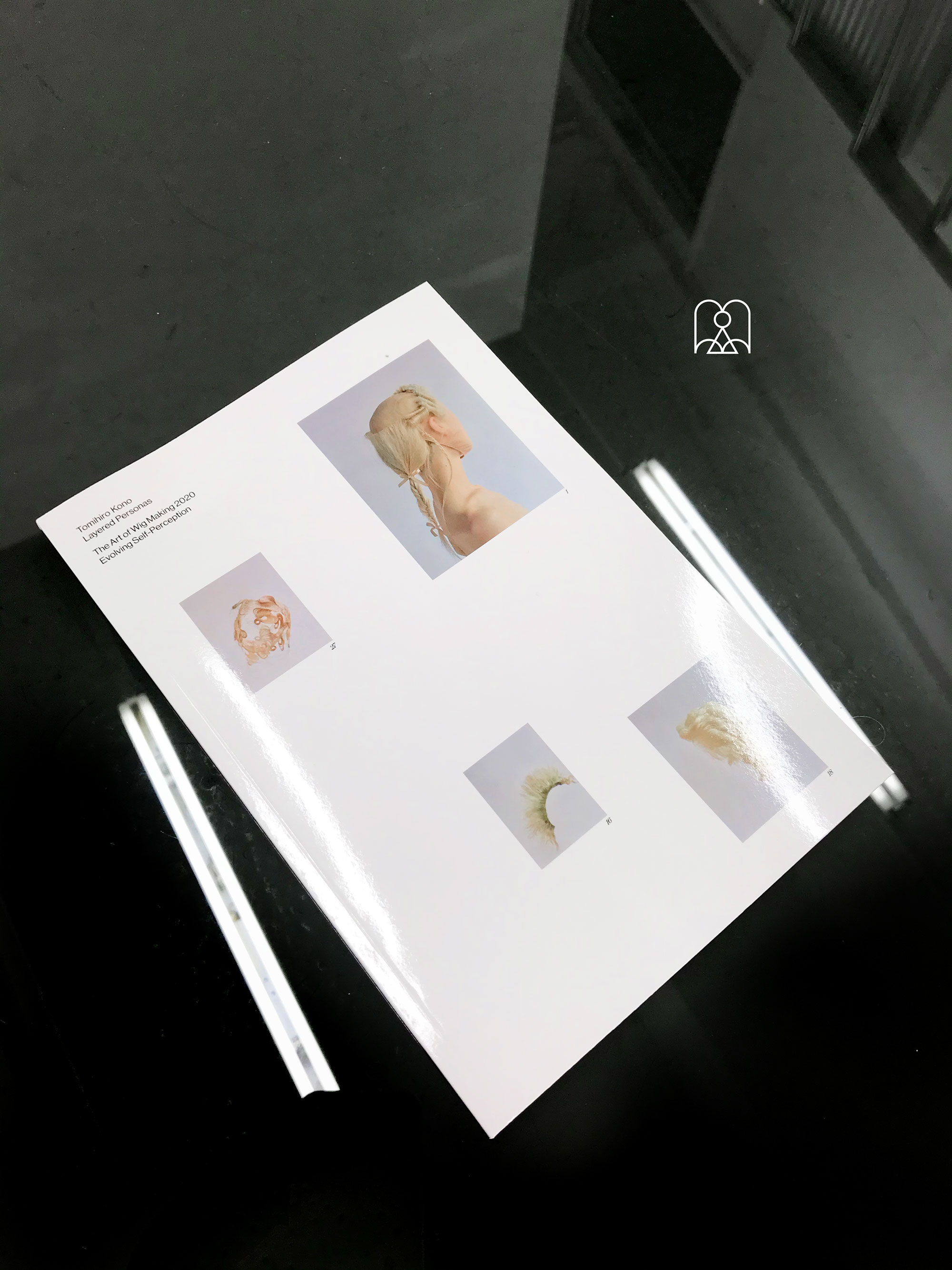
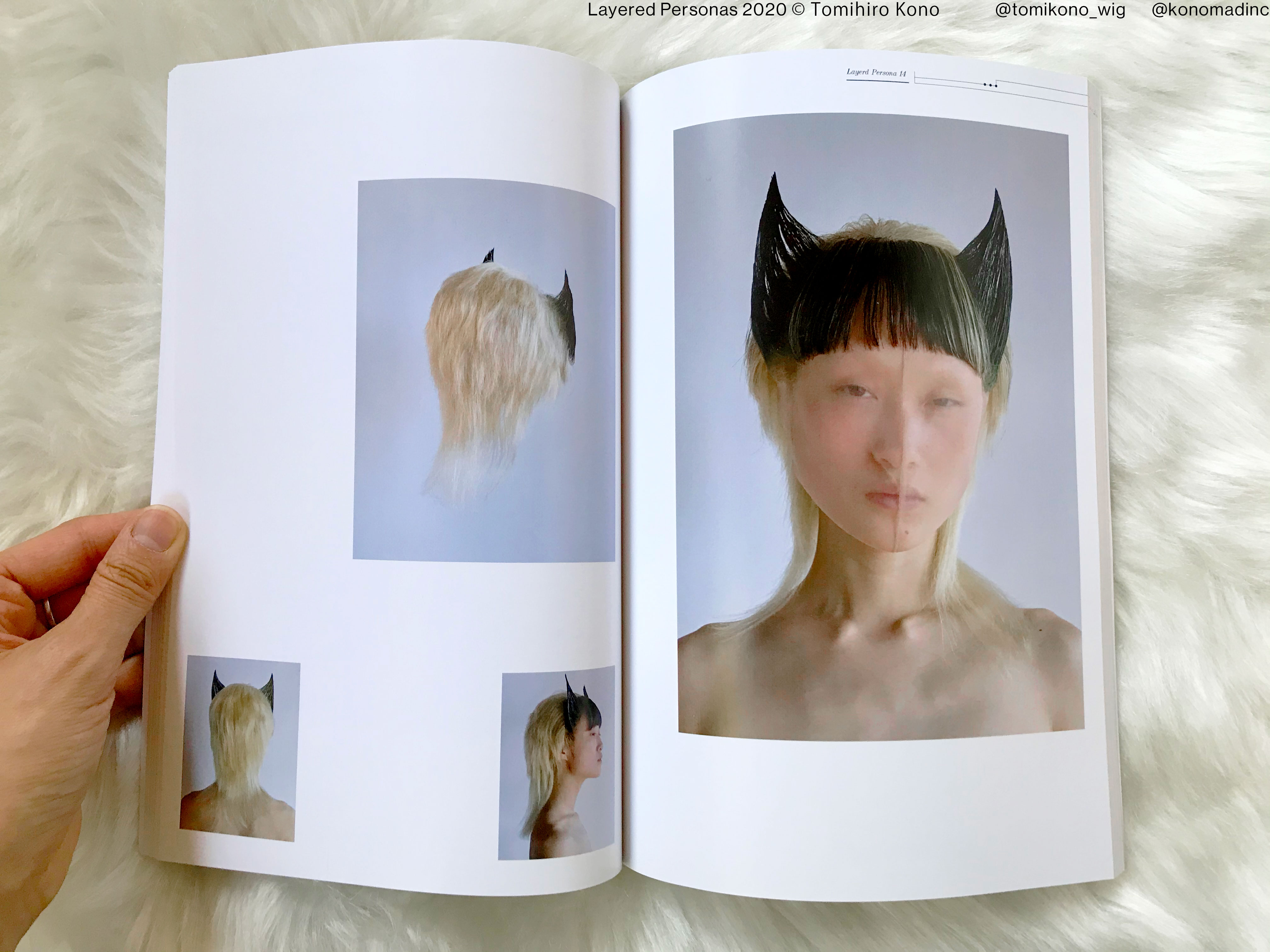
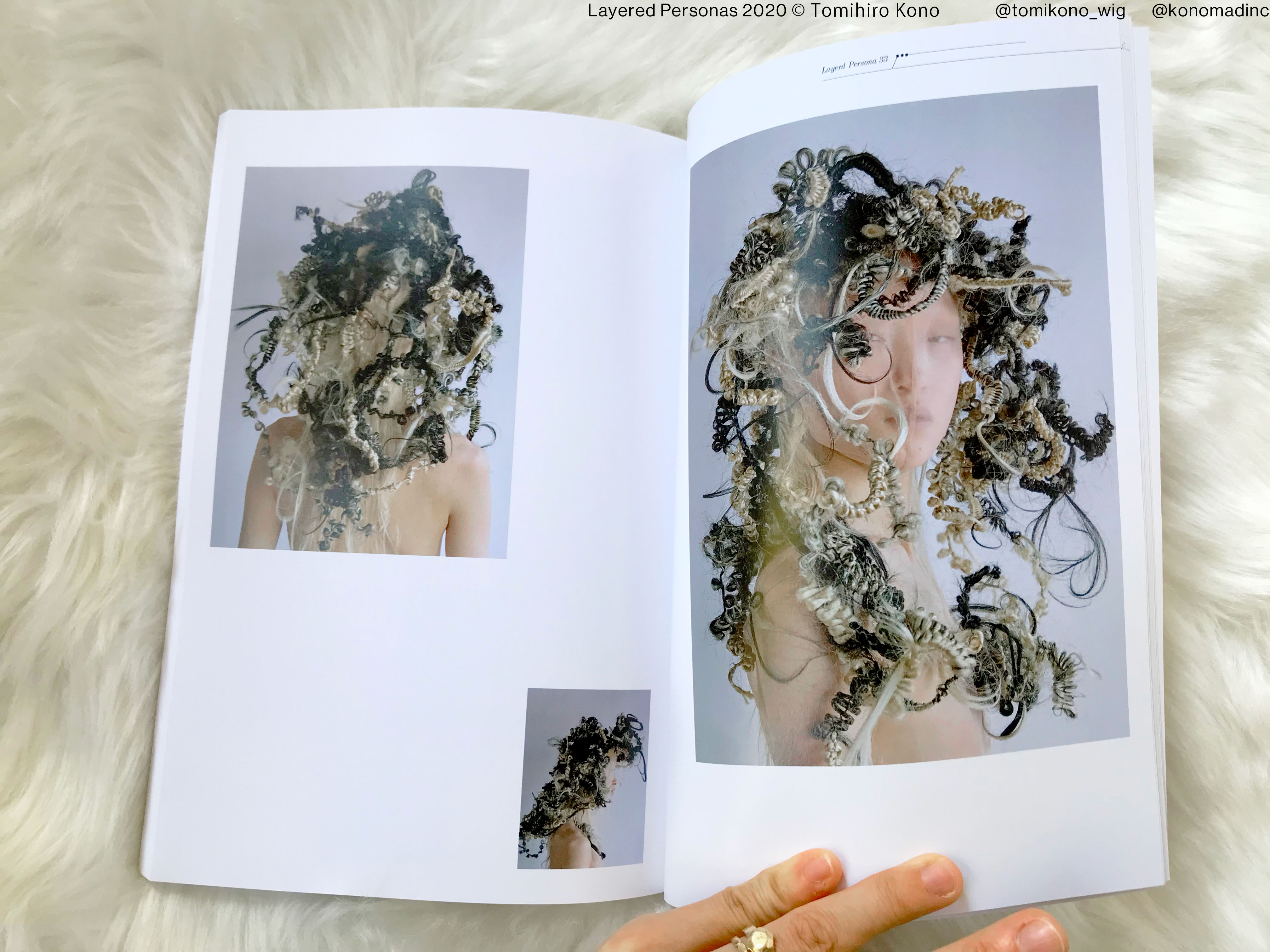
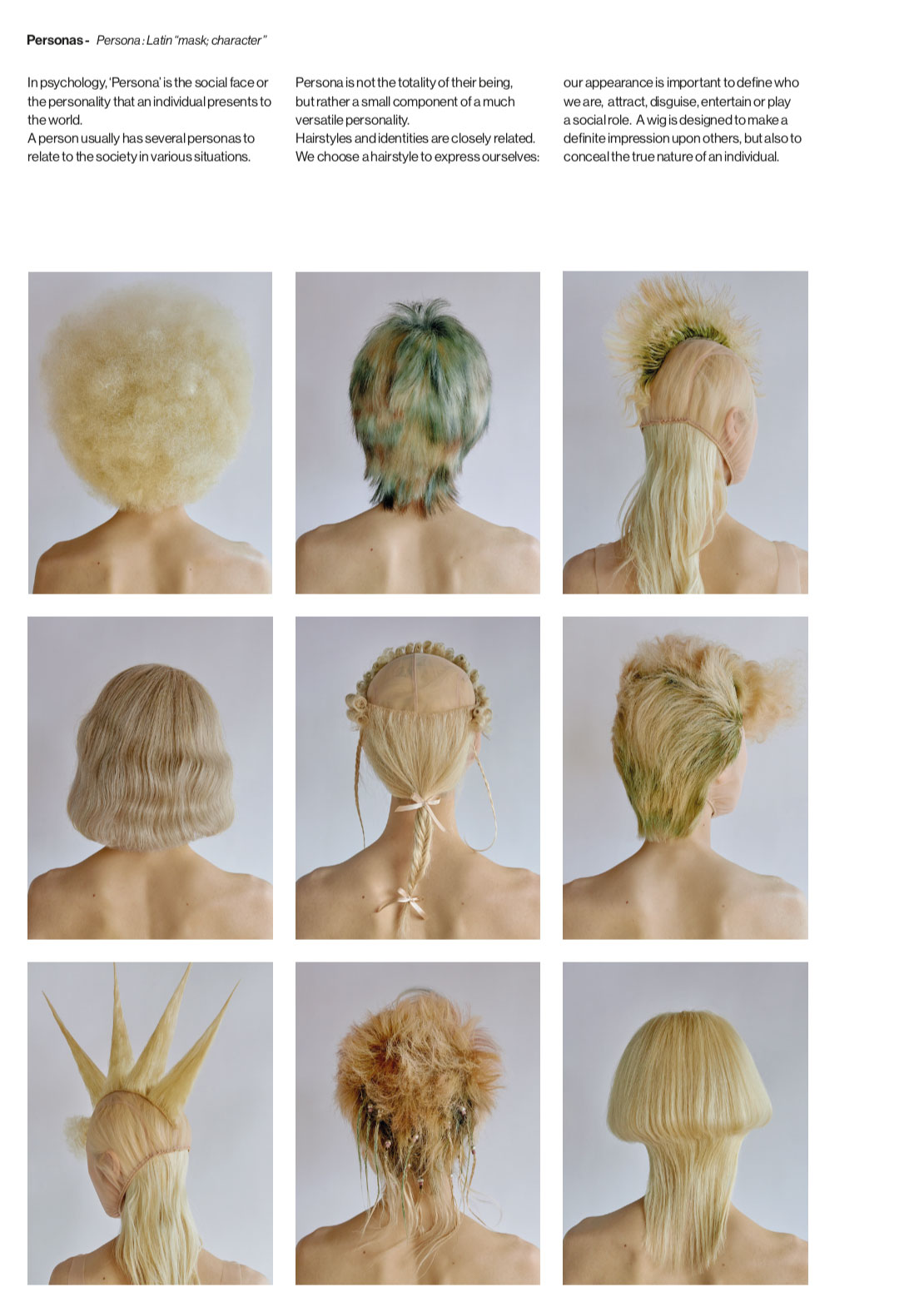
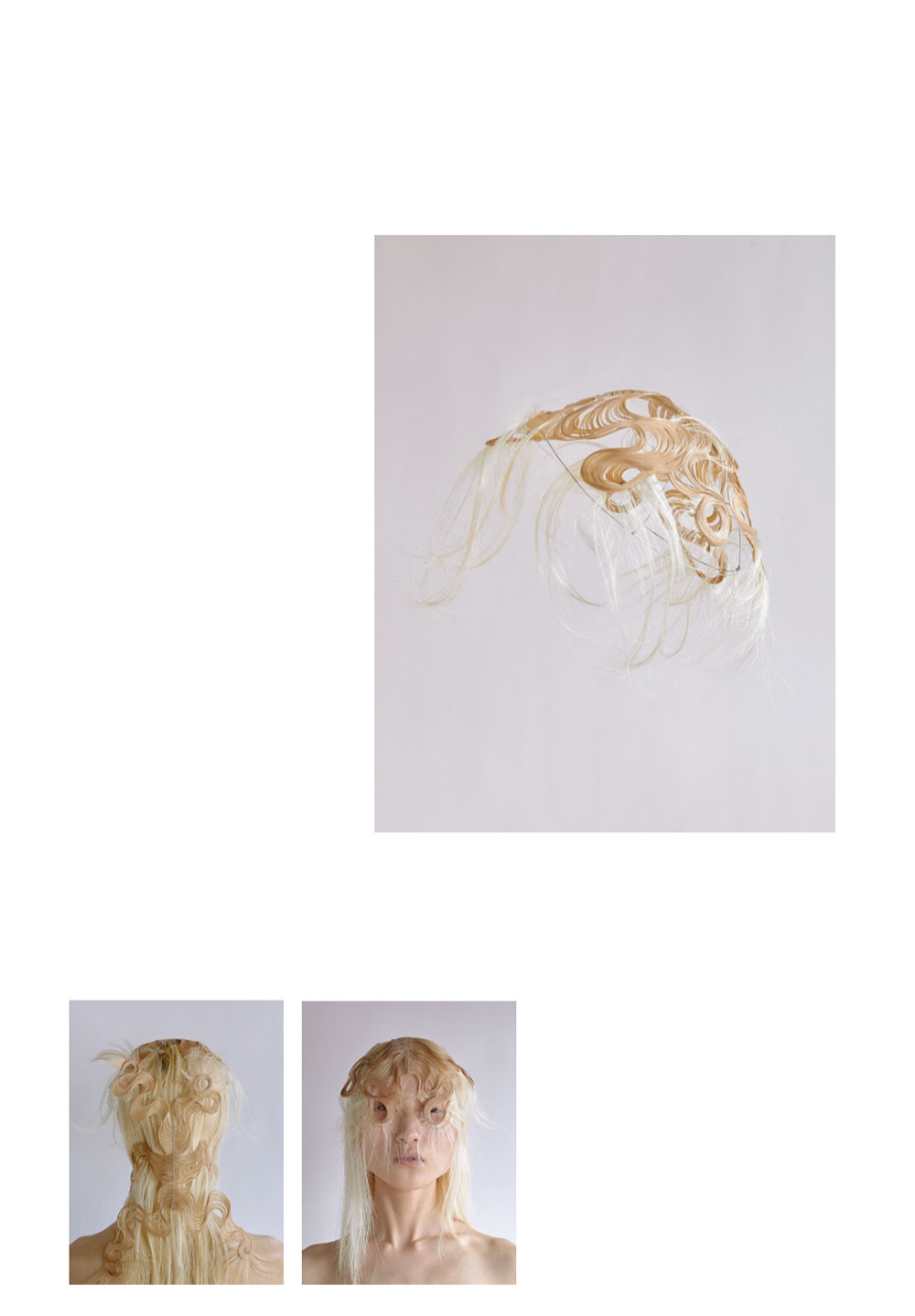
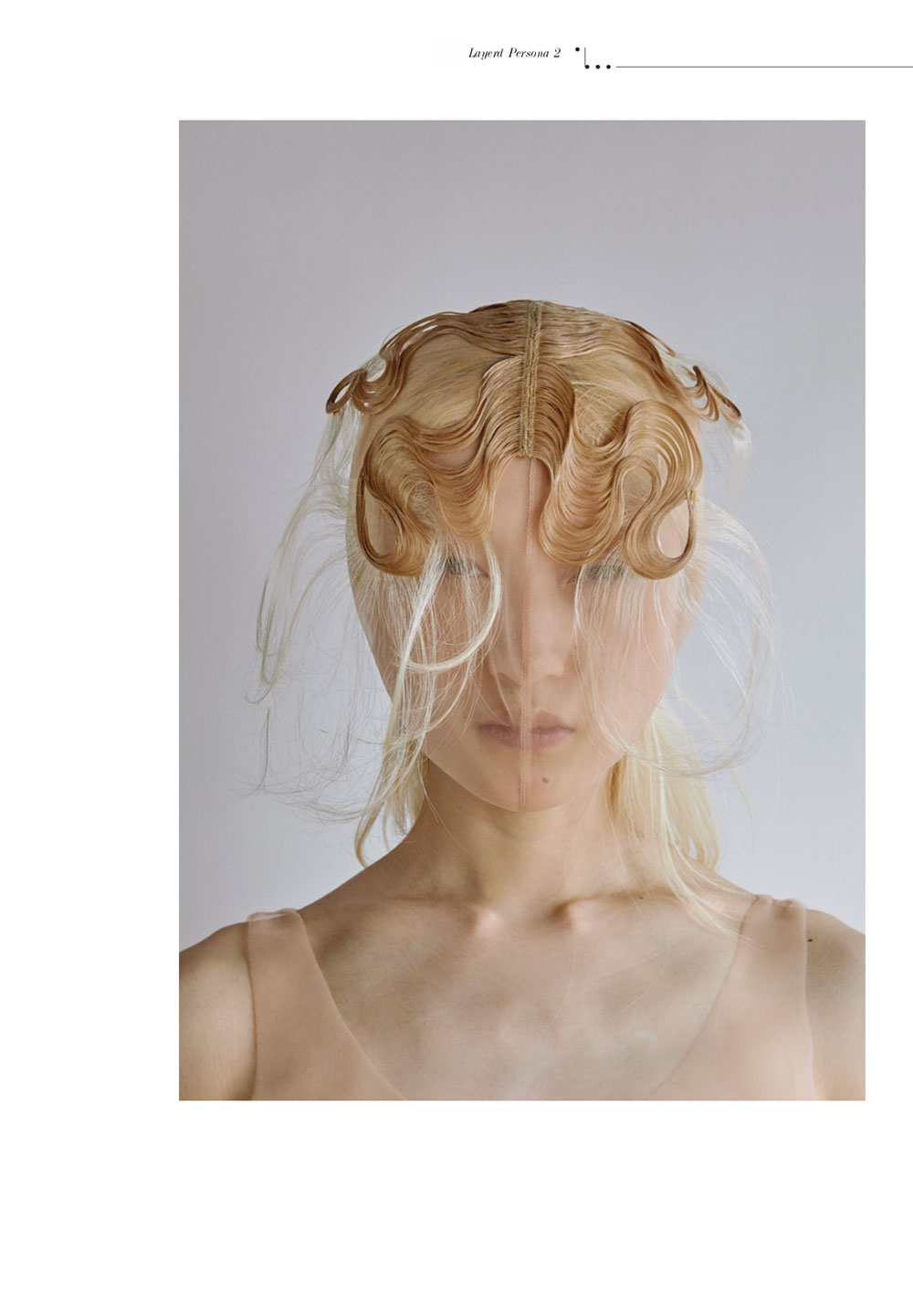
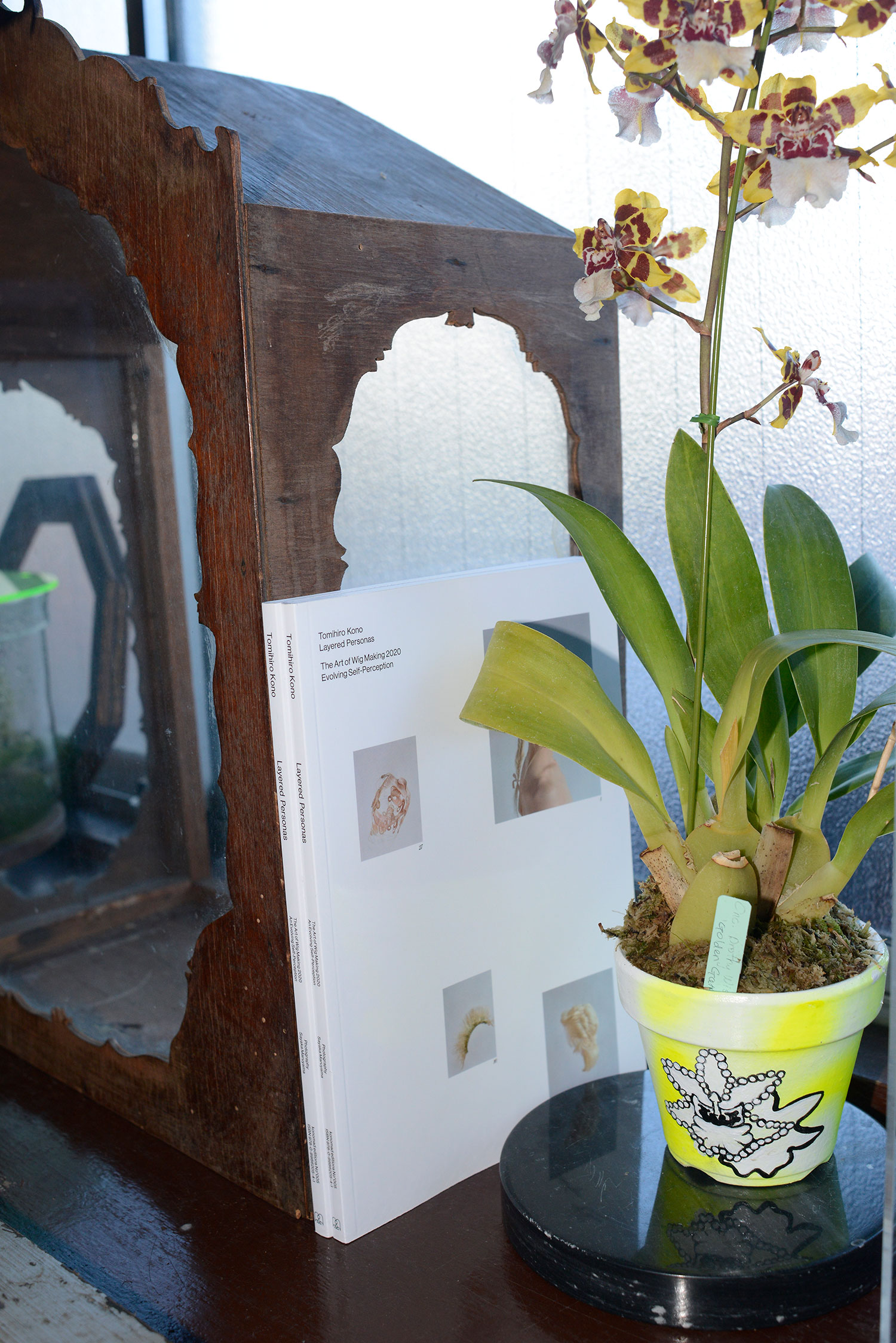
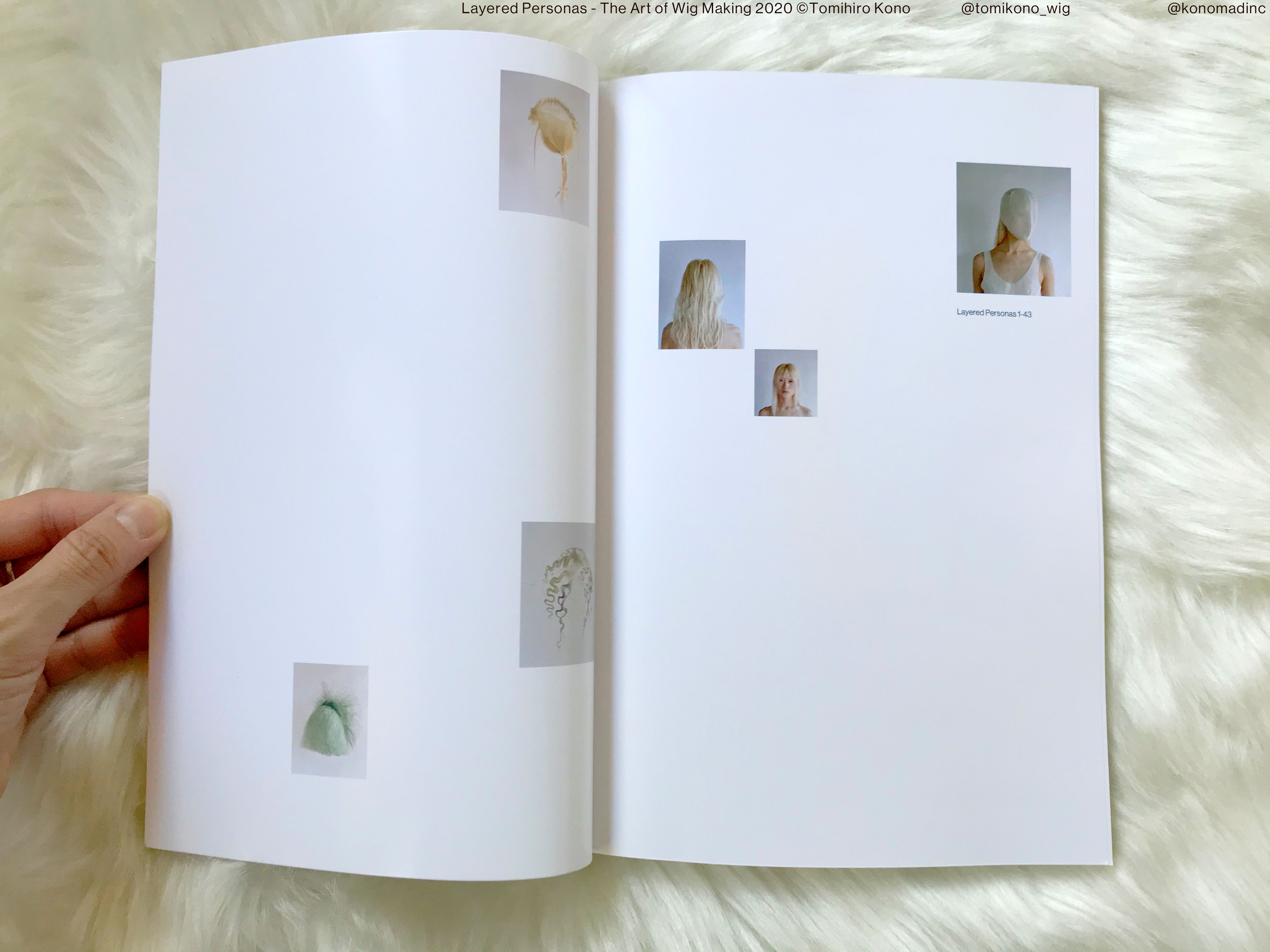
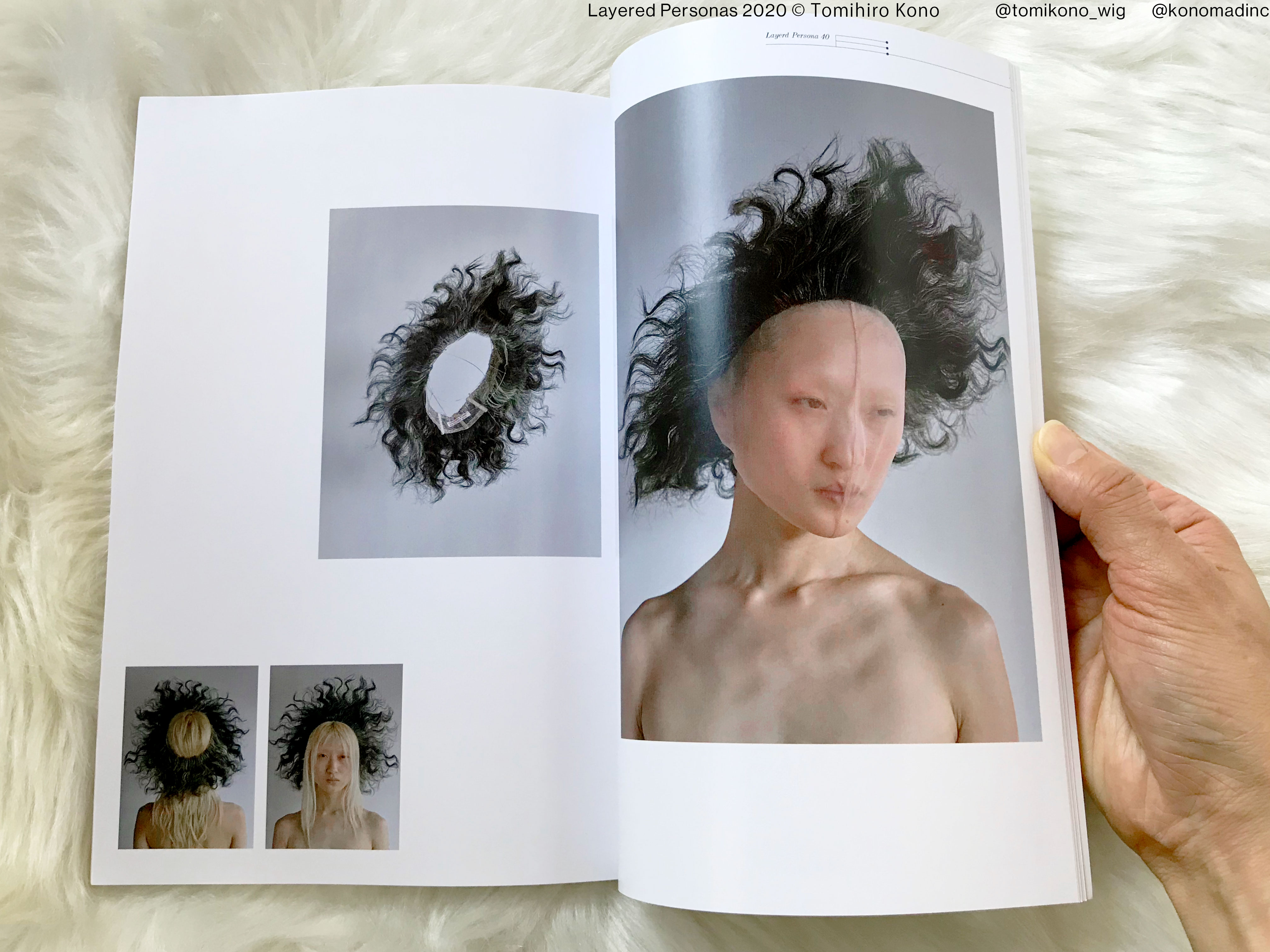
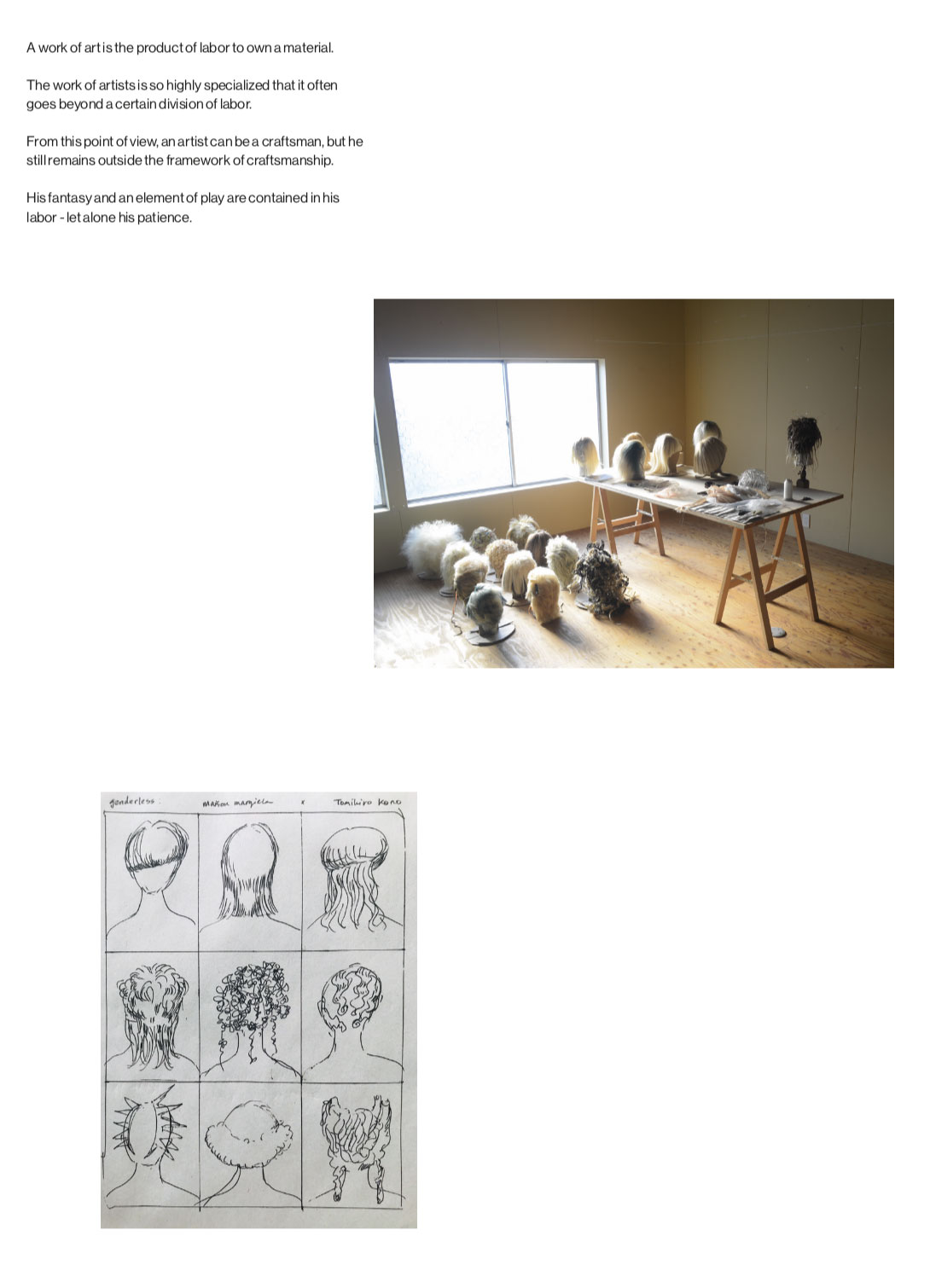
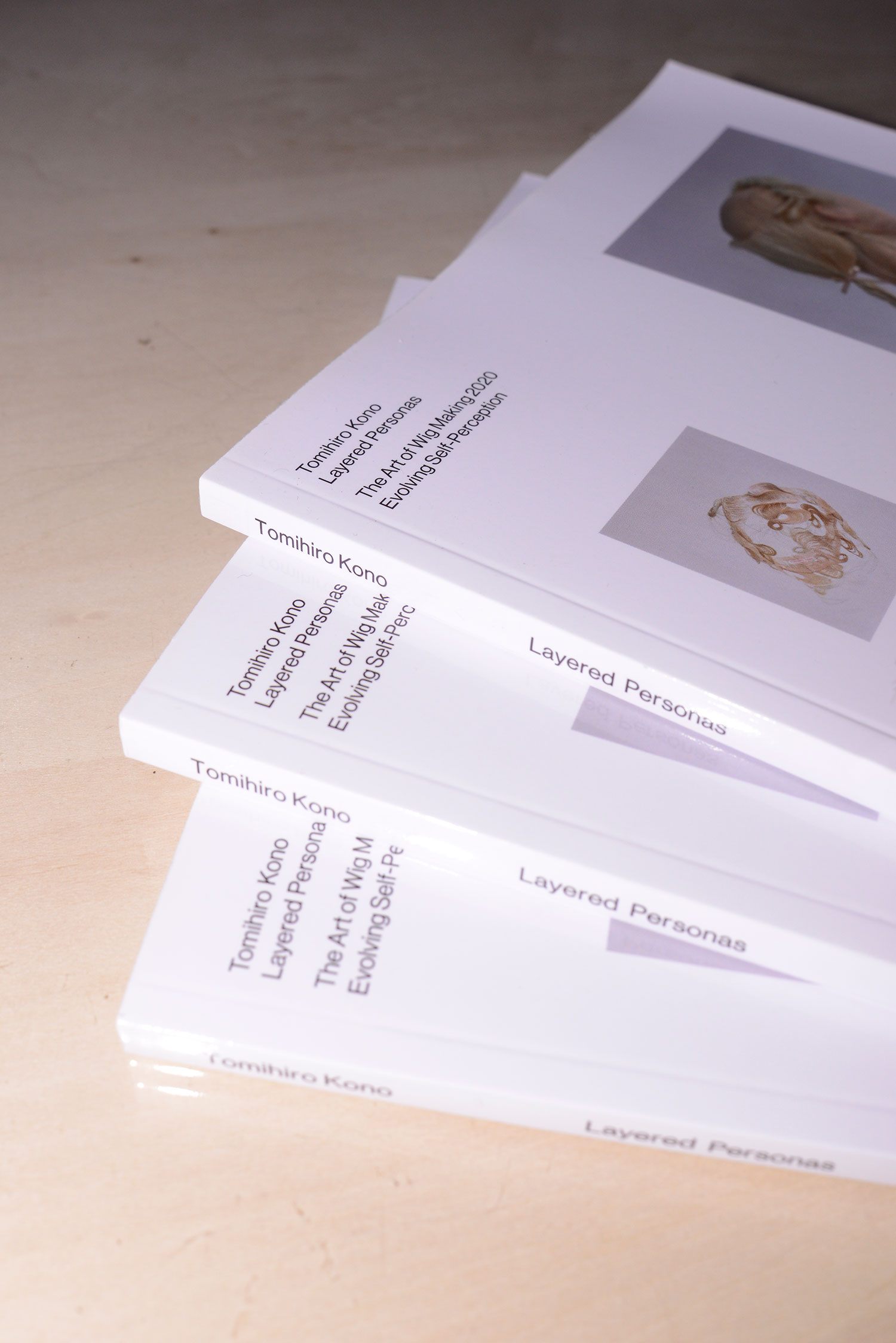
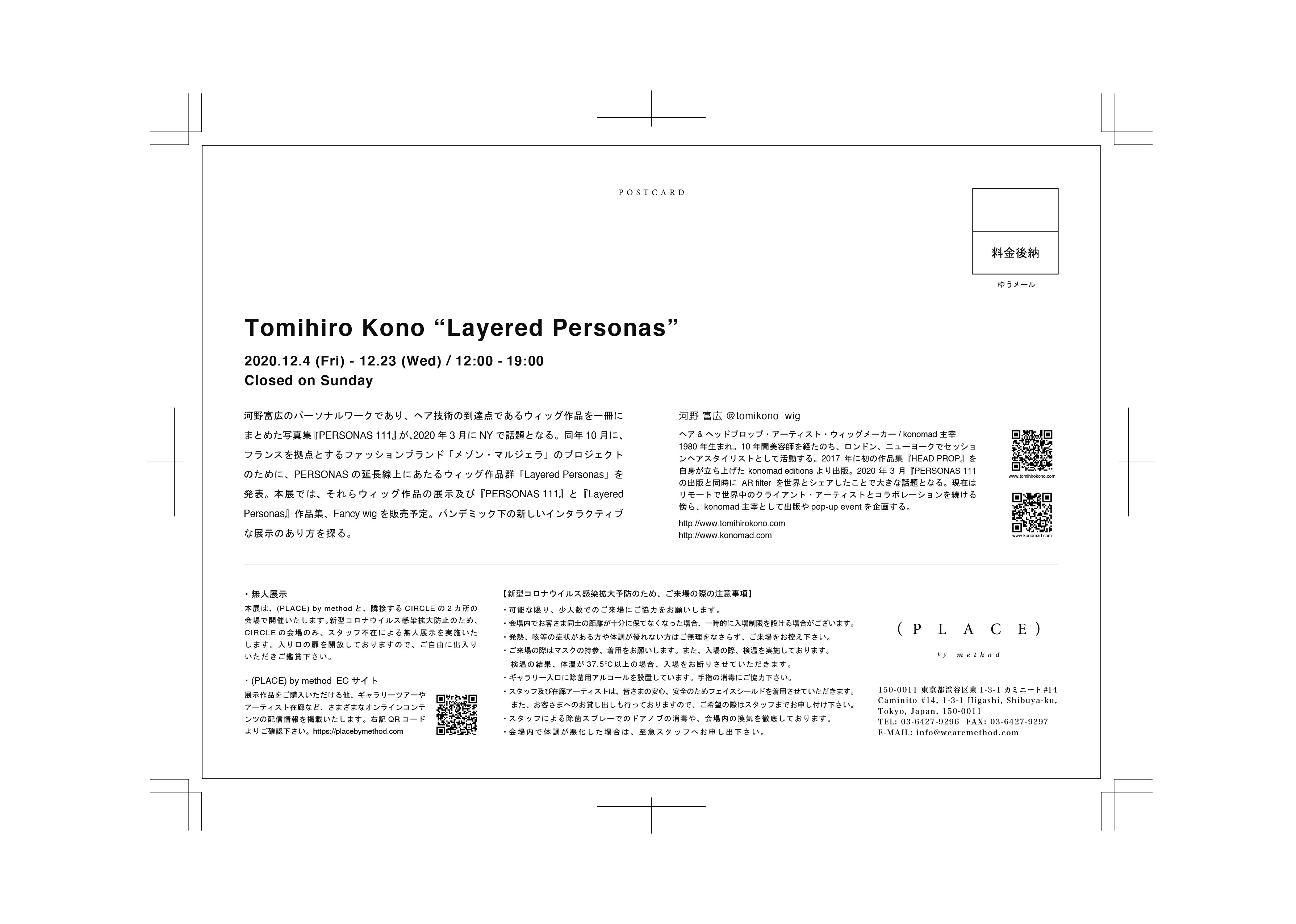
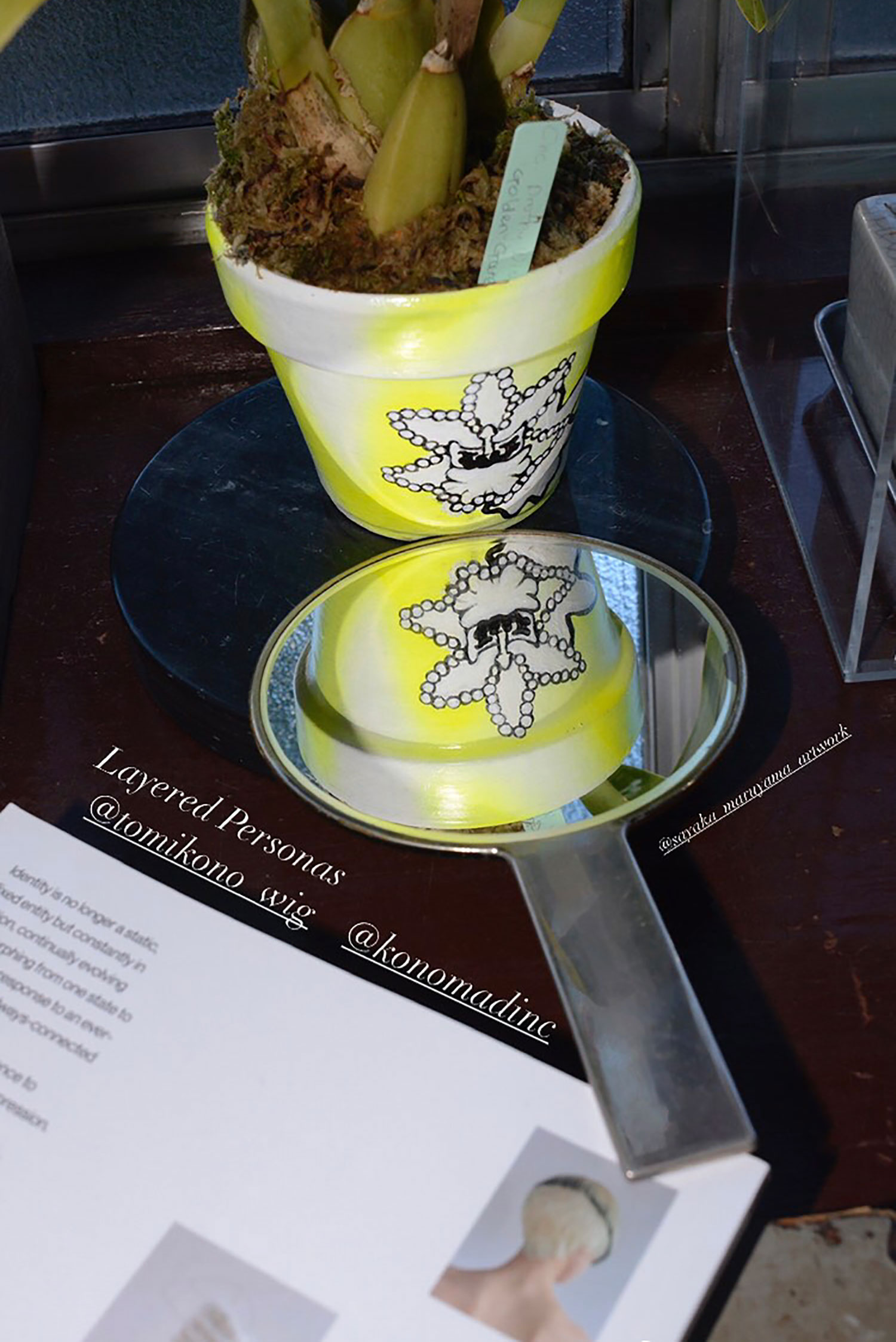
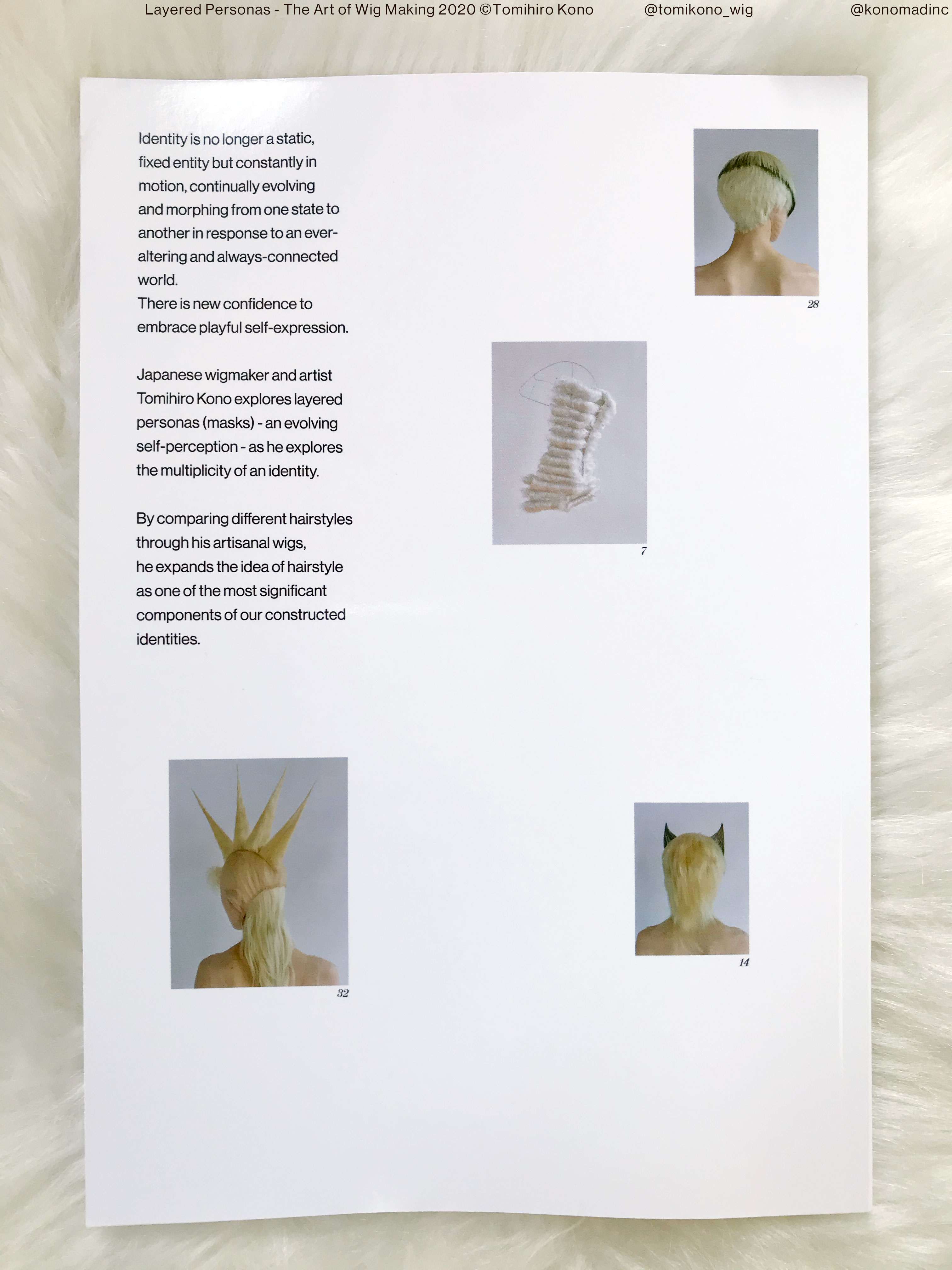

Tomihiro Kono:
Layered PERSONAS 111 - The Art of Wig Making 2020
Limited Editions of 150 : SOLD OUT Thank you!
Book Design: konomad
Publisher: konomad editions
ISBN 9780998620541
Identity is no longer a static, fixed entity but constantly in motion, continually evolving and morphing from one state to another in response to an everaltering and always-connected world. There is new confidence to embrace playful self-expression. Japanese wigmaker and artist Tomihiro Kono explores layered personas (masks) - an evolving self-perception - as he explores the multiplicity of an identity. By comparing different hairstyles through his artisanal wigs, he expands the idea of hairstyle as one of the most significant components of our constructed identities.
100 p, Soft cover, ills Full colour, 16.5cm x 24 cm, pb, English
konomad editions No.005
Layered PERSONAS 111 - The Art of Wig Making 2020
Limited Editions of 150 : SOLD OUT Thank you!
Book Design: konomad
Publisher: konomad editions
ISBN 9780998620541
Identity is no longer a static, fixed entity but constantly in motion, continually evolving and morphing from one state to another in response to an everaltering and always-connected world. There is new confidence to embrace playful self-expression. Japanese wigmaker and artist Tomihiro Kono explores layered personas (masks) - an evolving self-perception - as he explores the multiplicity of an identity. By comparing different hairstyles through his artisanal wigs, he expands the idea of hairstyle as one of the most significant components of our constructed identities.
100 p, Soft cover, ills Full colour, 16.5cm x 24 cm, pb, English
konomad editions No.005




WATCH > Wig Making Process for @ Maison Margiela (code:Genderless)
This project was a part of the series of artists
interpretations of the codes of Maison Margiela
Code: Genderless
This volume is published on the occation of the wig
exhibition @ CIRCLE + (PLACE) by method, Tokyo
Code: Genderless
This volume is published on the occation of the wig
exhibition @ CIRCLE + (PLACE) by method, Tokyo

Text by Christopher Schreck
“Man is least himself when he talks in his own person,” wrote Oscar Wilde. “Give him a mask, and he will tell you the truth.”
“Layered Personas,” Tomihiro Kono’s latest collection of hair-focused works, is premised in similar terms: in their design, execution, and potential effect, these pieces speak to the blurrings and boundaries that arise in the public expression of our inner selves, and to the spaces that might yet remain between what is shown and what is known. The forty-three looks on view in these pages confirm strategies that have long informed Kono’s practice, as he continues to find mutual potential in any number of apparent foils: fact and fantasy, function and beauty, private identifications and outward displays, historical precedent and unforeseen possibility. Central to Kono’s work is the idea that just as our self-identities might be seen as fluid, actively constructed and constantly evolving, so too might our choices in attire be understood as a variable, highly personal form of storytelling. For Kono, each hairpiece serves as a kind of controlled experiment: a new role to try on, a new perspective to adopt without risk or commitment. In providing outlets for instant transformation, his wigs allow their wearers to explore and enjoy the myriad ways we might (re)present ourselves to others—and indeed, the new lights in which we might come to see ourselves.
True to its title, this latest series extends Kono’s project by focusing on questions of layering, which he translates to physical, visual, and conceptual ends. To begin, as in earlier publications of his work, we find the artist using a single model to present the entirety of the collection. This strategy’s effect is subtle but instructive: as the subject moves from look to look, we as viewers are presented with a sequence of new “Personas,” distinct characters to whom we cannot help but assign unique readings and imagined narratives; though we recognize the model beneath as the same individual, we find ourselves thinking nonetheless in terms of the multiple, the miscellaneous. This sense of simultaneity is reinforced in Kono’s designs, which are at once deconstructive and composite: in some cases, he isolates select elements while forgoing others altogether, strategically framing the face while leaving portions of the wearer’s head visible (e.g., the “crown” effect of Personas 20, 36, and 40; the dissected strands of Personas 11 and 35); in others, the pieces are multi-tiered, almost sculptural, with abrupt overlays, swooping bangs, exaggerated volumes, and a deliberate intermingling of the model’s assumed and natural follicles. Throughout, we find elements in active dialogue, with disparate facets merging into hybrid ensembles.
“Man is least himself when he talks in his own person,” wrote Oscar Wilde. “Give him a mask, and he will tell you the truth.”
“Layered Personas,” Tomihiro Kono’s latest collection of hair-focused works, is premised in similar terms: in their design, execution, and potential effect, these pieces speak to the blurrings and boundaries that arise in the public expression of our inner selves, and to the spaces that might yet remain between what is shown and what is known. The forty-three looks on view in these pages confirm strategies that have long informed Kono’s practice, as he continues to find mutual potential in any number of apparent foils: fact and fantasy, function and beauty, private identifications and outward displays, historical precedent and unforeseen possibility. Central to Kono’s work is the idea that just as our self-identities might be seen as fluid, actively constructed and constantly evolving, so too might our choices in attire be understood as a variable, highly personal form of storytelling. For Kono, each hairpiece serves as a kind of controlled experiment: a new role to try on, a new perspective to adopt without risk or commitment. In providing outlets for instant transformation, his wigs allow their wearers to explore and enjoy the myriad ways we might (re)present ourselves to others—and indeed, the new lights in which we might come to see ourselves.
True to its title, this latest series extends Kono’s project by focusing on questions of layering, which he translates to physical, visual, and conceptual ends. To begin, as in earlier publications of his work, we find the artist using a single model to present the entirety of the collection. This strategy’s effect is subtle but instructive: as the subject moves from look to look, we as viewers are presented with a sequence of new “Personas,” distinct characters to whom we cannot help but assign unique readings and imagined narratives; though we recognize the model beneath as the same individual, we find ourselves thinking nonetheless in terms of the multiple, the miscellaneous. This sense of simultaneity is reinforced in Kono’s designs, which are at once deconstructive and composite: in some cases, he isolates select elements while forgoing others altogether, strategically framing the face while leaving portions of the wearer’s head visible (e.g., the “crown” effect of Personas 20, 36, and 40; the dissected strands of Personas 11 and 35); in others, the pieces are multi-tiered, almost sculptural, with abrupt overlays, swooping bangs, exaggerated volumes, and a deliberate intermingling of the model’s assumed and natural follicles. Throughout, we find elements in active dialogue, with disparate facets merging into hybrid ensembles.

To heighten these effects, Kono employs two key visual strategies. First is his characteristically
imaginative use of color, whose function here is at once aesthetic and structural, providing the
artist a means of defining edges, reinforcing depth, and emphasizing sections within a single
composition. Notice, for instance, how he uses darkened tips to articulate the angled levels of
Persona 28; how he leaves the front and undersides undyed to amplify the dramatic waves and
sharp asymmetries of Persona 22; how he approximates choppy layers through purposefully
staggered staining in Personas 4 and 42. Second, and perhaps more notably, he has fitted his
model with a thin lace mask—an approach previously unseen in his work. While not obscuring the
wearer’s face entirely, this simple veil does serve to blunt their features, allowing the individual to
become a kind of “blank canvas” whose anonymity focuses our attention on the formal traits of
each given wig. The masks introduce a new optical dimension to Kono’s pieces as well, as their
dulling mesh and exposed elastic bands become active components in the overall composition,
selectively layered among the installed wig and the model’s own platinum blonde hair. Kono has
long spoken of his work in terms of rhetorical masks, pointing to the social facades we use to
present, protect, and project ourselves in public; with these latest works, he allows these ideas to
take physical form, reinforcing the complexities—as well as the elements of choice and chance—
involved in constructing one’s character.
To examine our identities’ shifting nature is to speak in terms of mutability, of versions, of connotations that change over time—and for Kono, this line of thinking applies as much to hairstyles themselves as to the desires and allegiances they might embody. Indeed, one of the great pleasures of Kono’s work is its depth of reference: though his creations demonstrate immense ingenuity, they draw inspiration from a wide range of disciplines and historical styles whose strategies he reimagines to surprising new ends. This is certainly true of “Layered Personas,” as we see Kono taking cues from an array of historical precedents, from bouffants and bobs to bowl cuts and perms, from the spiky mohawks of ‘70s punk (Personas 16 and 32) to the formal conventions—tight curls at the crown, bow-tied ponytail at the nape—of 18th-century European court styles (Persona 1). Beyond merely reinterpreting extant models, however, these latest pieces find Kono freely merging them, combining their defining traits to form something altogether distinct. In Persona 7, we see the rowed curls of powdered wigs inverted, now lining the temples and jaw like a makeshift Shenandoah beard; in Persona 18, he marries the pompadour with the mullet, the resulting piece unfolding like a seamless collage; and in one particularly exciting instance, Kono fuses 1920s lacquered finger wave treatments with the visual language of Kumadori, the traditional stage makeup favored by actors in Kabuki theater (Persona 17). In tracing these varying influences, we’re reminded that each given style bears its own winding history, adopted and updated over time by disparate peoples for different purposes; just as our identities grow and change, it seems, so too do the means by which we express them.
To examine our identities’ shifting nature is to speak in terms of mutability, of versions, of connotations that change over time—and for Kono, this line of thinking applies as much to hairstyles themselves as to the desires and allegiances they might embody. Indeed, one of the great pleasures of Kono’s work is its depth of reference: though his creations demonstrate immense ingenuity, they draw inspiration from a wide range of disciplines and historical styles whose strategies he reimagines to surprising new ends. This is certainly true of “Layered Personas,” as we see Kono taking cues from an array of historical precedents, from bouffants and bobs to bowl cuts and perms, from the spiky mohawks of ‘70s punk (Personas 16 and 32) to the formal conventions—tight curls at the crown, bow-tied ponytail at the nape—of 18th-century European court styles (Persona 1). Beyond merely reinterpreting extant models, however, these latest pieces find Kono freely merging them, combining their defining traits to form something altogether distinct. In Persona 7, we see the rowed curls of powdered wigs inverted, now lining the temples and jaw like a makeshift Shenandoah beard; in Persona 18, he marries the pompadour with the mullet, the resulting piece unfolding like a seamless collage; and in one particularly exciting instance, Kono fuses 1920s lacquered finger wave treatments with the visual language of Kumadori, the traditional stage makeup favored by actors in Kabuki theater (Persona 17). In tracing these varying influences, we’re reminded that each given style bears its own winding history, adopted and updated over time by disparate peoples for different purposes; just as our identities grow and change, it seems, so too do the means by which we express them.

In negotiating the space between inner and outer self, a wig is a vehicle, a device capable of serving
any number of functions, from disguise and concealment to roleplay and personal revelation.
If so desired, Kono’s pieces can be used to any of these given ends—but perhaps more importantly,
in considering his broader practice, we also come to understand that such functions needn’t be
mutually exclusive. Donning a new look can be simultaneously a gesture of masking and assertion,
of performance and fresh apprehension; even in their variety, the alter-egos we create (or uncover)
along the way can co-exist, adopted interchangeably in response to a given mood or moment. As
it bridges the gaps between two states of being, transformation reveals unforeseen potential—
and this is precisely what makes Kono’s work so exciting: its embracing of plurality, of multiformity,
of wild and diverse possibility. In presenting his “Layered Personas,” he reminds us that the Self is
actually many at once, a constellation whose complexity evades even our own awareness at times.
Each wig, then, is a tool by which we might embrace our individuality while expanding the means
by which we define it; moving from option to option, we recognize identity as something to be not
just expressed, but also explored, with each new look serving as both an outward signifier and a
source of potential self-discovery. This, in the end, is the promise of Kono’s output: in stepping away
from the prescribed and familiar, we find ourselves concerned instead with what might be possible,
coming ever closer to a new kind of truth.
October 2020








本書の序文:
今、私たちはこれまで以上に
多面性を受けいれはじめていると感じます。
あらゆる個人は不確かな存在であり、
常に進化し続けています。
そのため、私たちが自分自身を表現するために選ぶ方法も、
絶えず流動していくのです。
アイデンティティとは、今や静的で固定化されたものではありません。
私たちが生きる世界が変化しつづけるように、とある状態から別の状態へと絶えず移ろい、進化し、変わり続けます。だからあそびのある自己表現を受けいれる新たな確信が生まれているのです。
日本人ウィッグメーカー・アーティストの河野富広は、layered personas=レイヤードされたペルソナ(社会的な仮面)、つまり「進化し続ける自己認識」の表現の可能性をヘア表現を通して探ろうとしています。アイデンティティの多面性を、ブロンドをメインとした淡い色調で作られたウィッグを用いて、ヘアスタイルの表現で探るアイデアとともに、繰り広げます。
本書「Layered Personas」で河野が焦点を当てるのは、モデルのブロンドの地毛とのバランスで実験しながら、半透明なマスクのありなしも含め、ウィッグを身につけるバリエーションです。その表現はまるで一つのアイデンテティを作るために複数の仮面を重ねる行為であるかのようです。
今、私たちはこれまで以上に
多面性を受けいれはじめていると感じます。
あらゆる個人は不確かな存在であり、
常に進化し続けています。
そのため、私たちが自分自身を表現するために選ぶ方法も、
絶えず流動していくのです。
アイデンティティとは、今や静的で固定化されたものではありません。
私たちが生きる世界が変化しつづけるように、とある状態から別の状態へと絶えず移ろい、進化し、変わり続けます。だからあそびのある自己表現を受けいれる新たな確信が生まれているのです。
日本人ウィッグメーカー・アーティストの河野富広は、layered personas=レイヤードされたペルソナ(社会的な仮面)、つまり「進化し続ける自己認識」の表現の可能性をヘア表現を通して探ろうとしています。アイデンティティの多面性を、ブロンドをメインとした淡い色調で作られたウィッグを用いて、ヘアスタイルの表現で探るアイデアとともに、繰り広げます。
本書「Layered Personas」で河野が焦点を当てるのは、モデルのブロンドの地毛とのバランスで実験しながら、半透明なマスクのありなしも含め、ウィッグを身につけるバリエーションです。その表現はまるで一つのアイデンテティを作るために複数の仮面を重ねる行為であるかのようです。